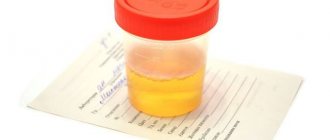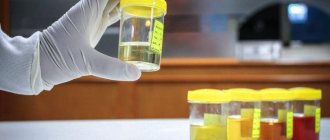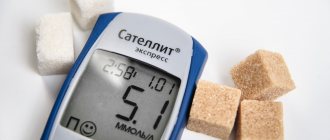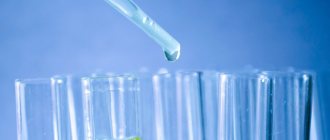Urine tests are used in the diagnosis of kidney and urinary tract diseases, to identify endocrine pathologies and metabolic disorders in the body. The most widespread is a general urine test, which is widely prescribed at almost every visit to a doctor. There are various methods for examining urine, differing from each other in the methods of its collection. The general principles of preparing for urine tests are almost the same for men and women.
To obtain reliable results, you need to prepare yourself for the study: refrain from physical activity, drink alcohol, and go to bed the night before at your usual time.
The sample must be collected in a clean container without traces of cleaning agents. It is advisable that urine is delivered for examination in the same container where it was collected. It is convenient to collect the material in plastic containers, which can be obtained in any laboratory procedure room in advance of urine collection or purchased at a pharmacy.
It is unacceptable to send urine for testing in containers not intended for these purposes, since the remnants of ingredients contained in such containers can significantly distort the test results.
The collection of biological material is preceded by a thorough toilet of the external genitalia so that discharge from them does not get into the urine. Immediately before urinating, men are advised to free the urethral opening from the foreskin, and women are advised to spread the labia and wipe the area of the urethra with a tampon. To avoid unreliable results, do not donate material during menstrual bleeding. If the material is collected from a bedridden patient, his genitals are washed, for which a pale solution of potassium permanganate can be used. After this, the perineum is wiped with a tampon towards the anus.
Preparing for a general urine test
No special preparation is required for the study. The material should be collected in the morning, while the urine that has accumulated there overnight is still in the bladder. Before urinating, general hygiene procedures are required. The container for urine must be sterile, for which you can purchase disposable cups at the pharmacy. To reduce the risk of microbes from the genitals getting into the sample, it is recommended to first release a little urine, and then, without stopping, substitute the container. In total, you need to collect approximately 50 milliliters of material or a little more. The sample can be stored for no more than 2 hours in the refrigerator, otherwise the information content of the analysis is significantly reduced.
Factors influencing urine test results
The quality of any type of diagnosis and its reliability directly depend on the fulfillment of all conditions for preparing for the examination. This is true when studying any biomaterial, blood, saliva, feces, discharge from the cervical canal, etc. To obtain a reliable result, information on how to correctly take a urine test is useful. The composition and characteristics of this physiological fluid depend on many factors, foods and drinks consumed, medications taken, and emotional factors. To ensure that these prerequisites do not influence the results of the survey, clear rules have been developed on how preparation for the study should take place.
Preparation for 24-hour urine testing
Pre-prepare a clean container for collecting urine with a volume of at least 3 liters, into which you will collect biomaterial throughout the next day.
Collection technique:
- In the morning, completely empty your bladder, then collect all subsequent portions of urine into a prepared container exactly until the same time the next day.
- During collection, store the container with urine in a cool, dark place at a temperature (+4...+8°C).
- After collecting daily urine, mix it thoroughly and pour about 50 ml into a disposable plastic container; indicate on the label the exact volume of urine excreted per day (for example: “Diuresis 1500 ml”).
- Screw the lid on the container and deliver the biomaterial for research.
Rules for collecting biomaterial
In order to obtain reliable information about the state of the body, it is necessary to properly organize the collection of urine. So, experts advise adhering to the following rules:
- In the evening, take care of the container in which you will collect biological material. The most convenient way is to purchase a plastic jar with a lid at the pharmacy. Their main advantage is absolute sterility, so you don’t have to bother with additional processing. If you suddenly cannot go to the pharmacy, you can use small glass containers (preferably no more than 150 ml). If you prefer the second option, the jar and lid must be well sterilized in any convenient way.
- Immediately after waking up, go to the bathroom and carry out the necessary hygiene procedures regarding the genital organ. Please note that you can only use warm water and baby soap. Hygiene products with fragrances and other additives are extremely unacceptable.
- Any doctor will tell you that for analysis it is necessary to collect an average portion of natural fluid. That is, the first portion should go past the jar (to the toilet), then we substitute the container and collect about 40-50 ml of urine.
- Next, you need to tightly close the container or jar and deliver the material to the laboratory in the next couple of hours.
Preparing for the Zimnitsky test
The Zimnitsky test is performed to assess kidney function—their ability to concentrate and excrete urine. The study differs from others in the method of collecting material. In total, you need to receive 8 portions of the material strictly at a certain time. At 6 a.m. you need to urinate, after which, starting at 9 a.m., collect urine into labeled containers every 3 hours. All urine obtained, without mixing, must be brought to the laboratory. In addition, you need to indicate how much liquid was taken during the day. It is necessary that the total volume of liquid drunk is within 1-1.5 liters.
Preparation, collection and transportation of urine for bacteriological examination
It is advisable to collect biomaterial before using antibacterial, antifungal or immunobiological therapy. If treatment is prescribed, it is recommended to complete the course and then conduct an analysis after 10-14 days.
- Urine is collected STRICTLY in sterile containers, observing hygiene rules
- After thoroughly toileting the external genitalia, without touching the body with the sterile container, collect a medium portion of morning urine (release a little urine, stop urinating and then collect 3-5 ml in the container).
- A lidded container with biomaterial is delivered to the laboratory. If rapid transportation is not possible, it is permissible to store the biomaterial at a temperature (+4...+8°C) for no more than 24 hours.
Preparation and rules for collecting stool and urine analysis
To check the functioning of the gastrointestinal tract and urinary system, the doctor sends us to examine stool and urine tests. There are different options for taking these tests, depending on what the doctor wants to know. Therefore, do not rush to immediately run to the laboratory if you complain of frequent urination, lower back pain or abdominal discomfort with a jar of urine or feces, but contact a specialist who will recommend the right type of study and notify you on the spot about preliminary preparations .
But if you still go to the laboratory first, read this information - it will help you not make mistakes when preparing for the study. A coprogram is a study of stool to diagnose diseases of the digestive system. In order for the analysis to be correct, you need to adhere to certain rules when preparing for it and during the fence itself. If stool is collected with errors, the analysis may reveal undigested food, fats, starch, and the doctor may make an invalid diagnosis. That's why:
- For analysis, bring “fresh” feces without foreign substances (water, urine), collected in a clean container with a lid (for example, a container that can be purchased at almost any pharmacy).
- 3 days before the study, stop taking medications that can change the structure and color of stool (laxatives, enzyme preparations, iron supplements, sorbents, rectal suppositories, oils, enemas).
- Stick to a diet for 4-5 days (do not eat foods that contribute to gas formation, constipation or loose stools).
- You cannot take a stool test after an X-ray examination of the intestines.
- do not take the test during menstruation, as blood may get into the test material (and then, unfortunately, the doctor may suspect internal bleeding, rectal fissures, or more serious problems). If, however, the analysis cannot be postponed for several days, perform a thorough toilet of the genital organs, install a tampon, wash the external genitalia again and begin collecting the analysis.
- Deliver the sample taken within 1-2 hours, at room temperature, do not freeze, do not overheat.
To study the intestinal microflora, feces are examined for dysbiosis
The collection rules correspond to the coprogram, but have several features. A stool test for dysbacteriosis is taken before starting antibiotics.
- The analysis must be collected in a sterile container (vessel). To do this, wash the container with a disinfectant solution, rinse with boiling water, and dry.
- put part of the stool (up to 1/3 of the volume) into a clean disposable container with a lid.
- deliver to the laboratory no later than 3 hours; do not freeze.
To identify helminths (worms) in the body, feces are prescribed for helminth eggs.
The preparation is the same. The only difference is that for testing, feces must be taken from several different places. Fill the container halfway, close, and deliver to the laboratory.
Urine is a biological fluid with which metabolic products are removed from the body. Its analysis is very important in the diagnosis of many diseases of the urinary and excretory system.
Failure to comply with the rules for taking a urine test can lead to an incorrect diagnosis. So:
- We collect morning urine on an empty stomach. We flush the first 1-2 seconds into the toilet, then 50-70 ml. in a clean, sealable container (can be purchased at almost any pharmacy or laboratory).
- deliver no later than 1.5-2 hours to the laboratory.
- on the eve of taking a urine test, do not consume foods and medications that can distort the color and content of urine (beets, carrots, citrus fruits, blueberries, vitamins, diuretics, mineral water...)
- per day - alcohol is strictly contraindicated, avoid any stress (intense physical, emotional), as protein may appear in the urine.
- The container for analysis must be sterile; if necessary, rinse with boiling water and dry.
- Do not take a urine test during menstruation, as blood cells may appear in the urine. But if, nevertheless, the study cannot be postponed for a while, perform a thorough toilet of the genital organs, install a tampon, wash again, and then collect the analysis. When visiting a doctor, inform about menstruation during the period of urine collection.
- If cystoscopy (examination of the bladder) was performed, postpone the test for 5-7 days.
In case of changes in the general urine test, to identify or exclude kidney diseases, the doctor prescribes a urine test according to Nechiporenko .
The preparation rules are the same, except that only the “middle portion” is used for analysis, that is: the first portion of urine into the toilet, then 20-30 ml. - into the container, and finish urinating into the toilet too.
To determine the concentration of urine, the doctor may recommend a Zimnitsky test (24-hour urine)
- During the day, 8 portions of urine are collected.
- For this you will need 8 containers with a volume of 1.5-2 liters. each. In advance, glue pieces of paper with the specified period of time onto all containers (containers, jars).
- During the day - normal diet and drinking
- Do not take diuretics
- At 6 am the patient empties into the toilet, the first container collects urine from 9.00 to 12.00, the second from 12.00 to 15.00, and so on..., from 3.00 to 6.00 am - in the eighth. At night, set an alarm for every 3 hours so you can urinate, and finish collecting at 6:00 am the next day.
- Store all containers in the refrigerator and deliver to the laboratory in the morning.
- If there was no urine in a three-hour period, the container is delivered empty.
A daily urine test is prescribed by a doctor to determine the amount of glucose and other substances in the urine.
Preparation is the same as for general analysis.
But for this you will need a large, clean container (perhaps a 3-4 liter jar with a lid) and, starting, say, at 7.00 in the morning, place all portions of urine, except the first, in this container (you can urinate in a smaller container and drain it) until 7:00 am the next day. All this time, the container is stored in the refrigerator at a temperature of 4-8 degrees (but do not freeze), the next morning, shake all the contents thoroughly, pour out 100-120 ml. and deliver to the laboratory, indicating the total volume of urine per day.
The article was prepared by ACMD-MEDOX specialists
Preparation for urine analysis according to Nechiporenko
The purpose of the study is to objectively assess the condition of the kidneys.
During the analysis, leukocytes, red blood cells and casts are determined.
An average portion of urine is taken for testing.
Preparation for the procedure is simple:
- Avoid spicy and salty foods, as well as foods that affect the color of urine, on the eve of the test.
- Stop taking diuretics two days before the test.
Collection technique:
- Carry out hygiene of the external genitalia.
- It is necessary to collect an average portion of urine, i.e. release the first part of urine into the toilet, then stop urinating and collect the middle portion in a container.
- A lidded container with biomaterial is delivered to the laboratory.
Urinalysis according to Nechiporenko does not require 100% sterility of the collection container, since it does not involve counting and identifying bacteria.
What does a general urine test show: deciphering the results
Decoding the results of a general urine test will help you understand the results obtained before visiting a doctor. However, in no case should you engage in self-diagnosis and self-medication based on the data obtained: to correctly analyze the results and make a diagnosis, you must contact a specialist.
Urine is analyzed in several categories, including:
- organoleptic properties,
- physical and chemical indicators,
- biochemical characteristics,
- microscopic studies.
But first things first.
Laboratory
Organoleptic indicators
Volume . The total volume of fluid for analysis does not allow us to draw any conclusions about diuresis disorders. It is only necessary to determine the specific gravity of urine (relative density).
Diuresis is the volume of urine produced over a certain period of time (daily or minute diuresis). Daily diuresis is usually 1.5-2 liters (70-80% of the liquid drunk). An increase in daily diuresis is called polyuria, a decrease to 500 ml is called oliguria.
The color of urine, as well as transparency, is determined by the laboratory assistant by eye. Normal color can vary from straw to deep yellow. It is determined by the presence of coloring substances in the urine - urobilin, urozein, uroerythrin. Any other shades can signal certain pathologies in the body, for example:
- dark brown - jaundice, hepatitis;
- red or pink color indicates the presence of blood in the analysis;
- dark red - hemoglobinuria, hemolytic crisis, porphyrin disease;
- black - alkaptonuria;
- a grayish-white color indicates the presence of pus;
- green or blue color is explained by rotting processes in the intestines.
The smell in a general urine analysis is not of decisive importance, since many foods containing essential oils or simply strong-smelling foods can give it a specific odor. However, some odors may indicate certain pathologies:
- the smell of ammonia indicates cystitis;
- fecal odor - E. coli;
- putrid odor - gangrenous processes in the urinary tract;
- the smell of acetone - ketonuria (the presence of ketone bodies in the urine);
- the smell of rotting fish - trimethylaminuria (accumulation of trimethylamine in the body).
Normally, the smell of urine is mild and somewhat specific. If the container is open, the smell becomes pungent due to the oxidation process.
Foaminess . Normally, when shaking urine, practically no foam forms in it, and if it does, it is transparent and unstable. If the foam persists or is stained, we can talk about jaundice or the presence of protein in the urine.
The transparency of a healthy person's urine approaches absolute clarity. Cloudiness can be caused by the presence of red blood cells, bacteria, mucus, fats, salts, pus and other substances. The presence of any substance is detected using special techniques (heating, adding various acids, etc.). If red blood cells, bacteria, protein or epithelium were detected in the urine, this indicates urolithiasis, pyelonephritis, prostatitis and some other diseases. White blood cells indicate cystitis. Precipitation of salts indicates the presence of urates, phosphates, and oxalates.
physical and chemical indicators
Density. Specific gravity of urine is an indicator that depends on age. The norm for adults and children over 12 years old is 1.010-1.022 g/l, for children 4-12 years old - 1.012-1.020, for children aged 2-3 years old - 1.010-1.017, newborns - 1.008-1.018. The density of urine depends on the amount of salts, proteins, sugars and other substances dissolved in it. In some pathologies, this indicator increases due to the presence of bacteria, leukocytes, and red blood cells. An increased rate may indicate diabetes mellitus or infectious processes in the urinary tract. In pregnant women - indicates toxicosis. Density may also be increased due to insufficient fluid intake or fluid loss. A reduced rate indicates renal failure and diabetes insipidus. It may also occur when drinking too much or taking diuretic medications.
Acidity. Normally it is in the range of 4-7 pH. A reduced indicator may indicate the presence of many diseases: chronic renal failure, increased levels of potassium in the blood, parathyroid hormones, ureaplasmosis, kidney or bladder cancer, etc. Increased acidity also occurs with dehydration and fasting, when taking certain medications, when high temperatures and heavy meat consumption. A pH higher than normal may indicate diabetes mellitus, decreased potassium levels, and disturbances in the acid-base balance of the blood.
Biochemical characteristics
Protein . Its concentration normally should not exceed 0.033 g/l. Detection of elevated levels may indicate kidney damage, inflammation in the genitourinary system, allergic reactions, leukemia, epilepsy, and heart failure. An increase in the amount of protein occurs with increased physical activity, profuse sweating, and long walking.
Increased protein in the urine is detected in physically poorly developed children 7-16 years old and pregnant women.
Sugar (glucose) in urine is normal - no more than 0.8 mmol/l. Increased sugar can be a consequence of diabetes, excessive consumption of sweets, kidney problems, acute pancreatitis, Cushing's syndrome, increased adrenaline levels due to damage to the adrenal glands. Also, increased sugar levels in the urine can occur during pregnancy.
Bilirubin is a bile pigment that should normally be absent from urine. Its detection indicates a sharp increase in the concentration of bilirubin in the blood, which is why the kidneys take on the job of removing it (normally, bilirubin is completely eliminated through the intestines). An increased level of this pigment in the urine indicates cirrhosis of the liver, hepatitis, liver failure, and cholelithiasis. The cause may also be massive destruction of red blood cells in the blood due to hemolytic disease, sickle cell anemia, malaria, and toxic hemolysis.
Ketone bodies (acetone) should not normally be detected in a general urine test. Their detection indicates metabolic disorders as a result of diseases such as diabetes mellitus, acute pancreatitis, thyrotoxicosis, and Itsenko-Cushing's disease. Also, the formation of ketone bodies occurs during fasting, due to alcohol intoxication, with excessive consumption of protein and fatty foods, due to toxicosis in pregnant women, as well as after injuries affecting the central nervous system.
Microscopic studies
Microscope
Sediment (organic, inorganic) . In a general urine analysis, sediment refers to cells, cylinders, and salt crystals that settle after short-term centrifugation. We will talk in more detail about the various substances that can be detected in sediment below.
Blood cells (erythrocytes, leukocytes) . Erythrocytes - red blood cells - may be present in urine in small quantities (for women - 0-3 in the field of view, single ones - for men). An increased level of red blood cells indicates serious diseases, such as:
- urolithiasis disease;
- nephrotic syndrome;
- kidney infarction;
- acute glomerulonephritis;
- cancer of the kidney, bladder, prostate.
Leukocytes in the sediment, identified in a general urine test, may be a consequence of urinary tract diseases (pyelonephritis, cystitis, urolithiasis, prostatitis, urethritis, cystitis, etc.). Normally, leukocytes in the urine of women and children are 0-6 in the field of view, in men - 0-3.
If the results of a general urine test revealed an increased level of leukocytes, you should make an appointment with a urologist, who will probably prescribe additional tests - a repeat OAM or in combination with a urine test according to Nechiporenko, a three-glass test, or an ultrasound of the kidneys. Often, all concerns are dispelled after repeated and additional studies are carried out.
Hyaline casts are cylindrical formations, which are dominated by renal tubular cells and protein. Normally they should not be in the urine. Their detection (over 20 in 1 ml) indicates hypertension, pyelonephritis, glomerulonephritis. These cylindrical formations can also occur when taking diuretics.
Grainy cylinders . Their composition is dominated by erythrocytes and renal tubular cells. The presence of granular casts in the urine in any quantity indicates viral infections, pyelonephritis and glomerulonephritis. Lead poisoning is also possible.
Wax casts , or waxy casts, are formed as a result of prolonged residence of a hyaline or granular cast in the lumen of the renal tubule. Their presence in the urine in any quantity indicates pathologies such as chronic renal failure, renal amyloidosis (deposition of insoluble protein - amyloid) in the kidney tissue, and nephrotic syndrome.
Bacteria . The presence of any bacteria in a general urine test indicates inflammatory processes in the urinary system. That is, normally bacteria should be absent. Their detection indicates infectious diseases such as urethritis, cystitis, prostatitis and others. For the results to be reliable, careful hygiene of the intimate areas is necessary before collecting urine.
Fungi in the urine, which normally should not be detected, are the result of infectious fungal lesions of the urinary tract and external genitalia. In addition, their detection may indicate immunodeficiency states and long-term use of antibiotics.
Salts . Their absence in urine is normal, but their presence in sediment may indicate the possibility of kidney stones. Elevated levels of uric acid (urate) can be the result of gout, nephritis, and chronic renal failure. Urates are often the result of a certain diet and dehydration. In newborns, the presence of urate is normal. Oxalates can be formed due to diabetes mellitus and pyelonephritis, hippuric acid crystals - due to intestinal dysbiosis and liver failure, phosphates - due to high calcium levels in the urine. However, it is always worth remembering that the detection of certain salts is often associated with increased consumption of certain foods, which means that their concentration can be easily reduced by changing the diet.
A summary table of the main indicators of a general urine test with normal values is as follows
So, with the help of a general urine test, you can identify a variety of kidney and bladder diseases, problems with the prostate gland, tumors and pyelonephritis, as well as a number of pathological conditions in the initial stages, when there are no clinical manifestations as such. Therefore, OAM should be performed not only when painful sensations appear, but also for the prevention and early detection of many diseases of the genitourinary system in order to prevent their further development.
Preparing for the 17-KS analysis
17-ketosteroids are metabolic products of sex hormones that are excreted in the urine and reflect the level of androgen production in the body. The analysis is used in the diagnosis of hormonal disorders and tumors of the endocrine glands. For research, daily urine is collected according to general rules. No special preparation for analysis is required. Before collecting urine, if possible, stop taking medications 2-3 days before, and do not eat foods that can color it the day before (for example, beets, carrots, etc.). It is recommended to maintain physical and psycho-emotional rest. All of the above is also true for testing urine for other hormones.
Preparing for the Urinary Bladder Cancer (UBC) Antigen Test
With malignant degeneration of the epithelium of the bladder, its walls intensely secrete the so-called cytokeratins. Determining them in urine is a reliable screening method for diagnosing cancer of this organ. For the study, a single portion of urine is taken. No special preparation is required, but two days before the test it is advisable to stop all diuretics, having agreed with your doctor. It is not recommended to conduct research in the presence of acute inflammatory processes of the genitourinary system.
You can submit your urine for the necessary analysis in any medical office. Our specialists are always ready to advise on how to properly prepare for a particular analysis in order to obtain the most reliable result. Skylab is:
- Comfortable. Ten laboratories located in different areas.
- Fast. The results of the study can be found on the website without leaving your home.
- Reliable. We use modern diagnostic equipment, which ensures high accuracy of analysis.
Given these advantages, the prices for our services are relatively low and affordable for the vast majority of patients.
When is it better to postpone the analysis?
There are situations when it is better to postpone this manipulation for a while, if health allows it. Women are strongly discouraged from donating urine during their menstrual periods. There is a high probability of bloody discharge, which will significantly compromise the reliability of the analysis. The same can be said about thrush in the acute stage. There is a 70% chance that the analysis will be unsatisfactory and will show a high bacteria content. It is also undesirable to donate urine if you have a cold, but this issue is resolved personally with the doctor, since situations can be different.







